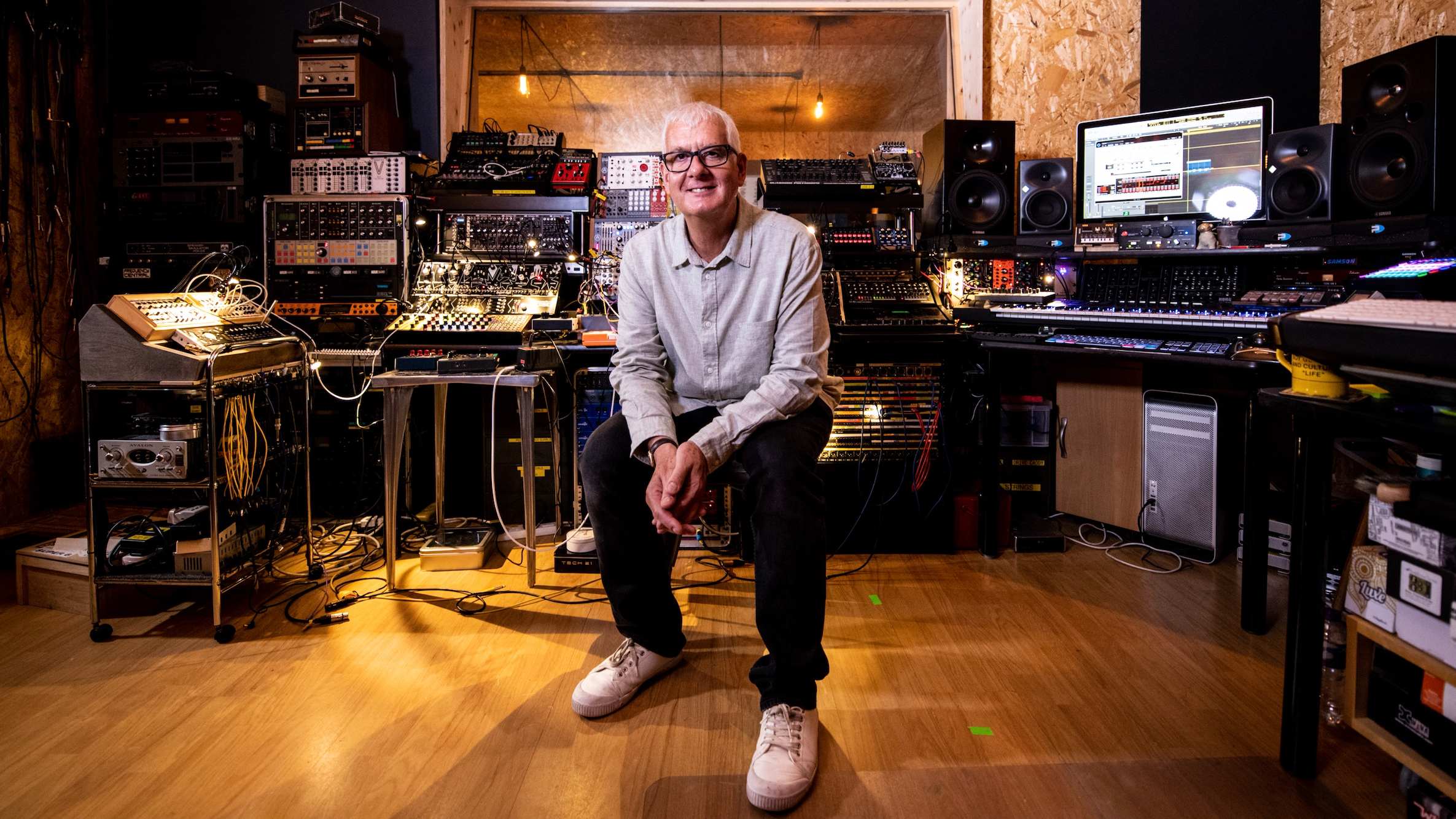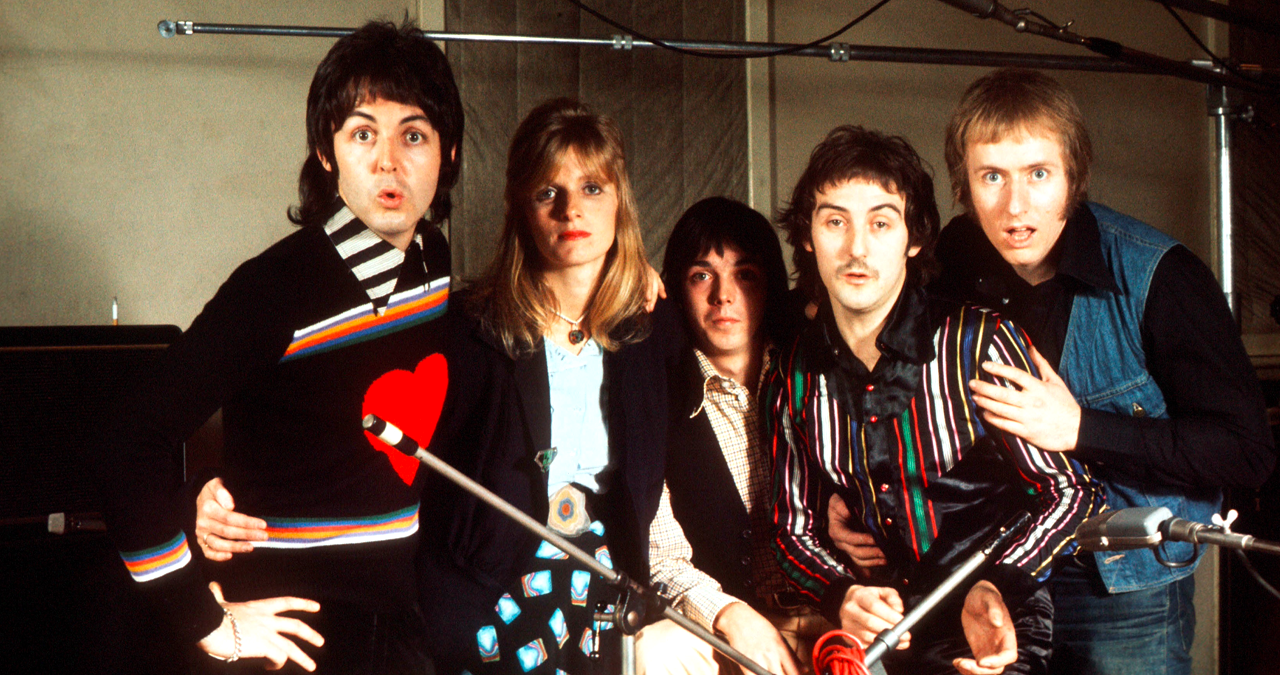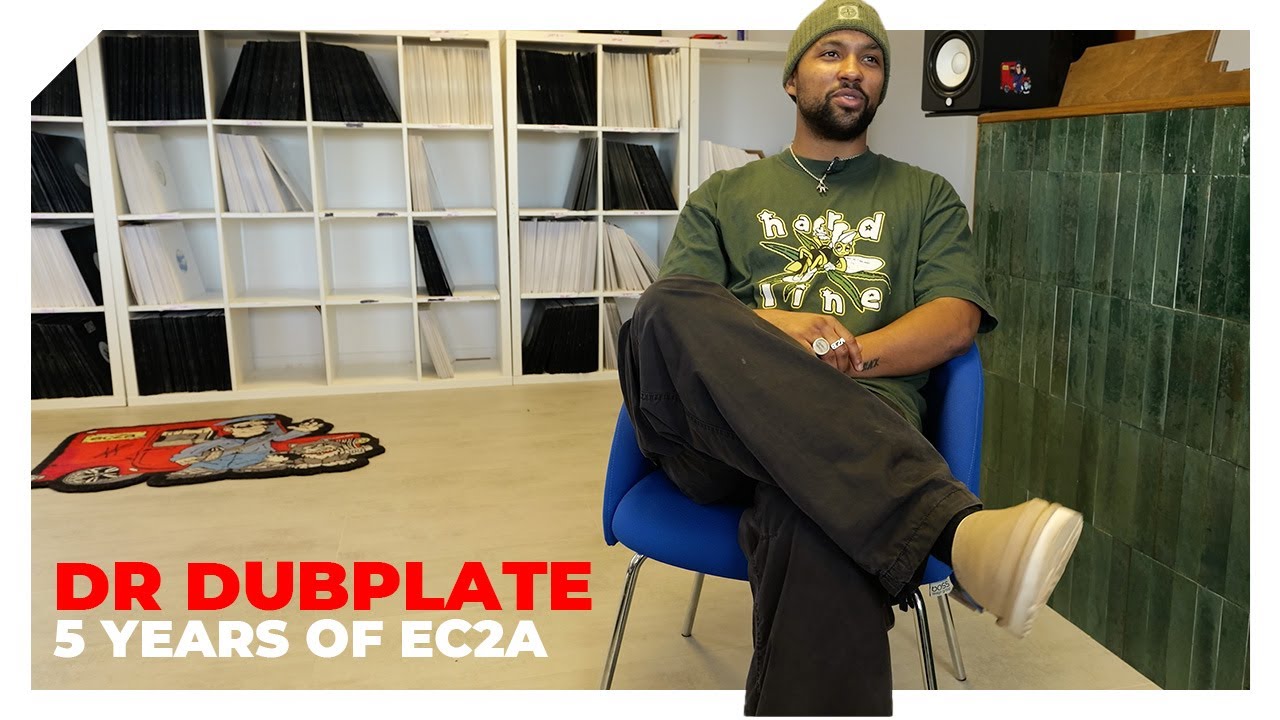“If this guitar had come out of one of our other facilities saying Fender no one would be having this conversation”: Fender’s Justin Norvell on the $599 Standard Series, how it was made, and why it is not a Squier with a different decal on the headstock
Fender’s EVP of product on who its new Indonesian entry-level series is for, what its critics are getting wrong, and why this is (probably) as affordable as the Acoustasonic is going to get
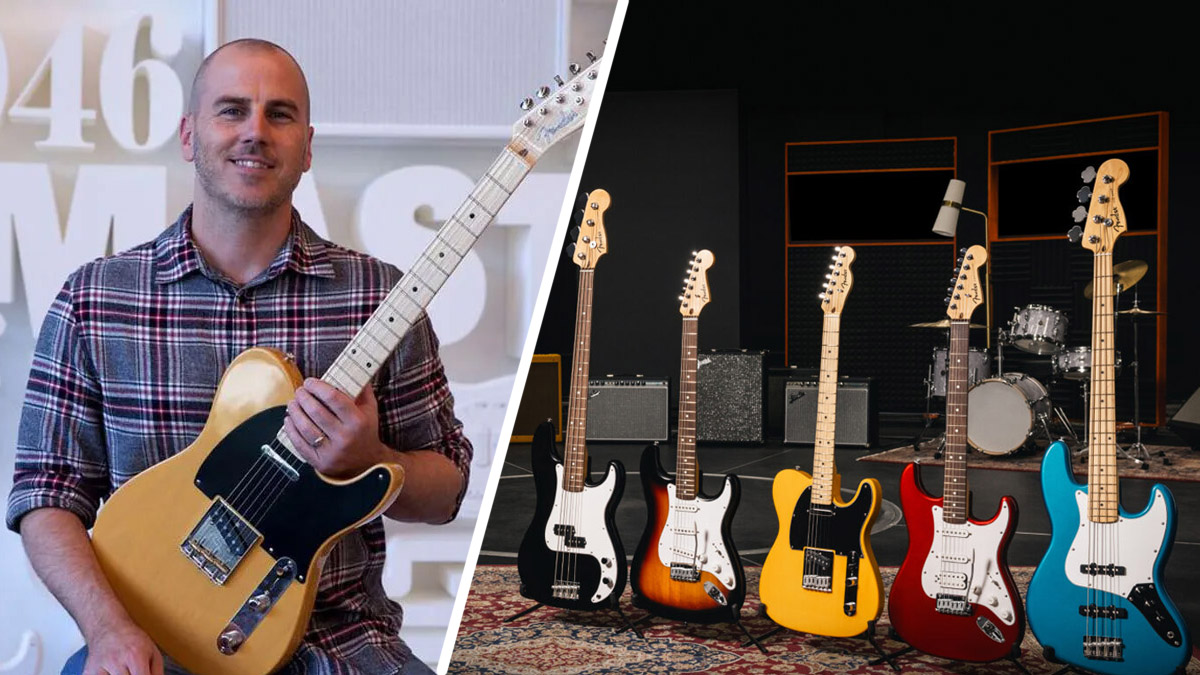
Fender has truly put the Strat among the pigeons with the launch of the Standard series. Here we are taking out a second mortgage to finance the purchase of a dozen eggs then along come genuine Fender Stratocasters and Telecasters for $599 street.
Yes, those figures are correct. Unveiled during the new gear fever of NAMM 2025, the Standard range is the most affordable Fender you’ll find and comprises the Strat, HSS Strat and Telecaster, Fender’s O.G. bass guitars, the Precision Bass and Jazz Bass – plus, the pièce de résistance, the Acoustasonic Jazzmaster and Telecaster (again, street price $599).
This minor economic miracle comes thanks to the Big F deepening its decades-old working relationship with Cor-Tek to manufacture the instruments in Indonesia.
Most players will recognise the name Cor-Tek. The South Korean company releases its own guitars under the Cort brand and works with a number of overseas brands. PRS Guitars’ partnership with Cor-Tek on its SE line has been one of the biggest success stories in electric guitar manufacturing.
Joining us over Zoom, Fender’s executive vice president of product, Justin Norvell, now in his 30th year with the company, reminds us that Fender’s partnership with Cor-Tek has similarly yielded high-profile hits for the brand in recent years. The Jim Adkins signature Telecaster, which has always been a huge unit-shifter, is an Indonesian build, so too the Tom DeLonge signature guitars.
It was just like, ‘What is the best guitar that we can make with this partner, in this facility, that would be worthy of the Fender name?’
Norvell and Cor-Tek go way back. The first product line he managed for Fender was built by them. “I did the Squier ’51 in the Cort factory,” he tells MusicRadar. “We designed it and we drew it, and we did that guitar in Korea at the time. It’s a 40-year plus relationship that we’ve been working together on acoustics, on some amplifiers, on guitars – so a very, very important partner of ours.”
Fender has also released Asian-made guitars under its own name, most notably with its current high-end Japanese-made lineup, but also in the past with the Chinese-made Modern Player range, which was launched in 2011, retailed for around 500 bucks, and besides the price was perhaps most memorable for the return of the cult-classic Marauder.
Get the MusicRadar Newsletter
Want all the hottest music and gear news, reviews, deals, features and more, direct to your inbox? Sign up here.
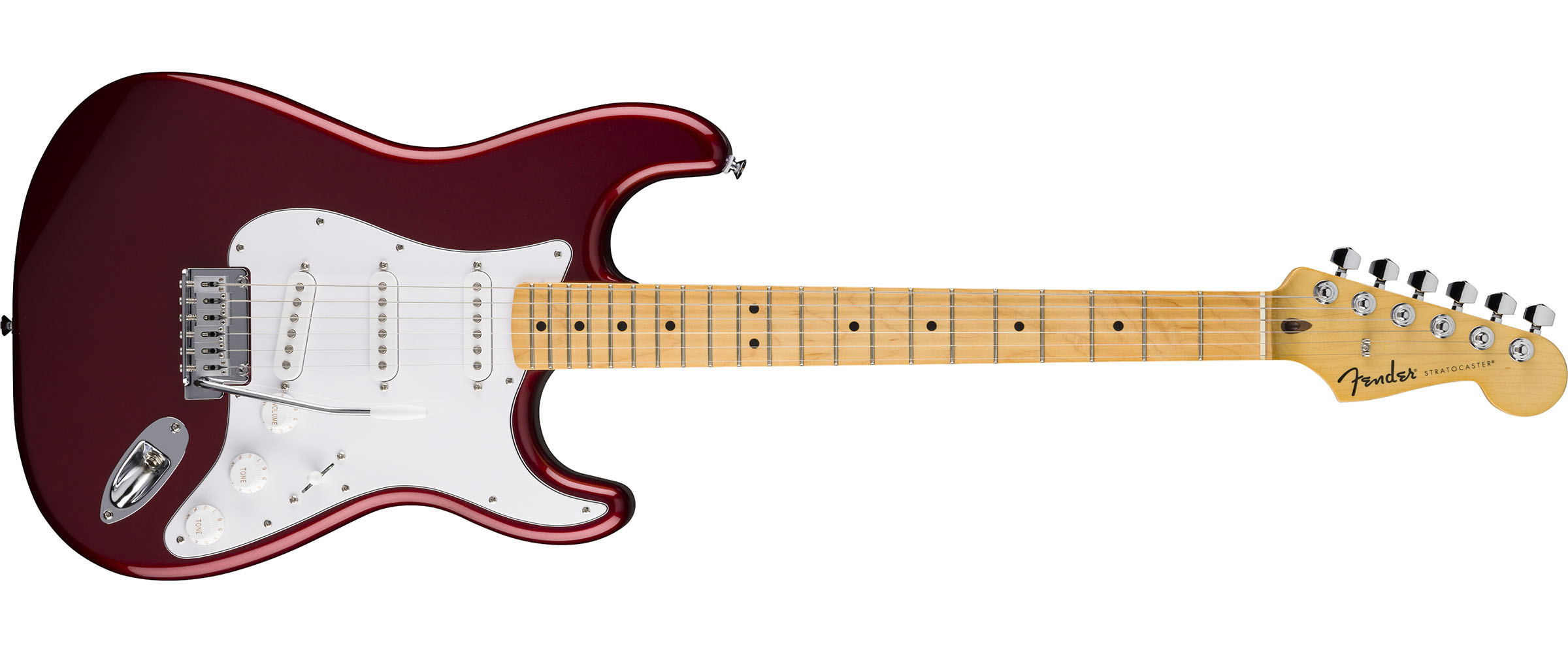
With the quality of guitars being made out of Fender’s Ensenada facility in Mexico rising all the time – and, accordingly, the price – Norvell says it was time to go all-in with the Indonesian project and revisit what an entry-level Fender guitar looked like.
Sitting somewhere in between Squier’s top-of-the-line Classic Vibe Series and the Player II, that Standard Series guitar looks something like this: the electrics all have poplar bodies, bolt-on maple necks with a satin urethane finish and Modern C profile, a gloss urethane finish on the headstock, 9.5” radius Indian laurel fingerboards, with 21 medium jumbo frets. The pickups are new ceramic winds.
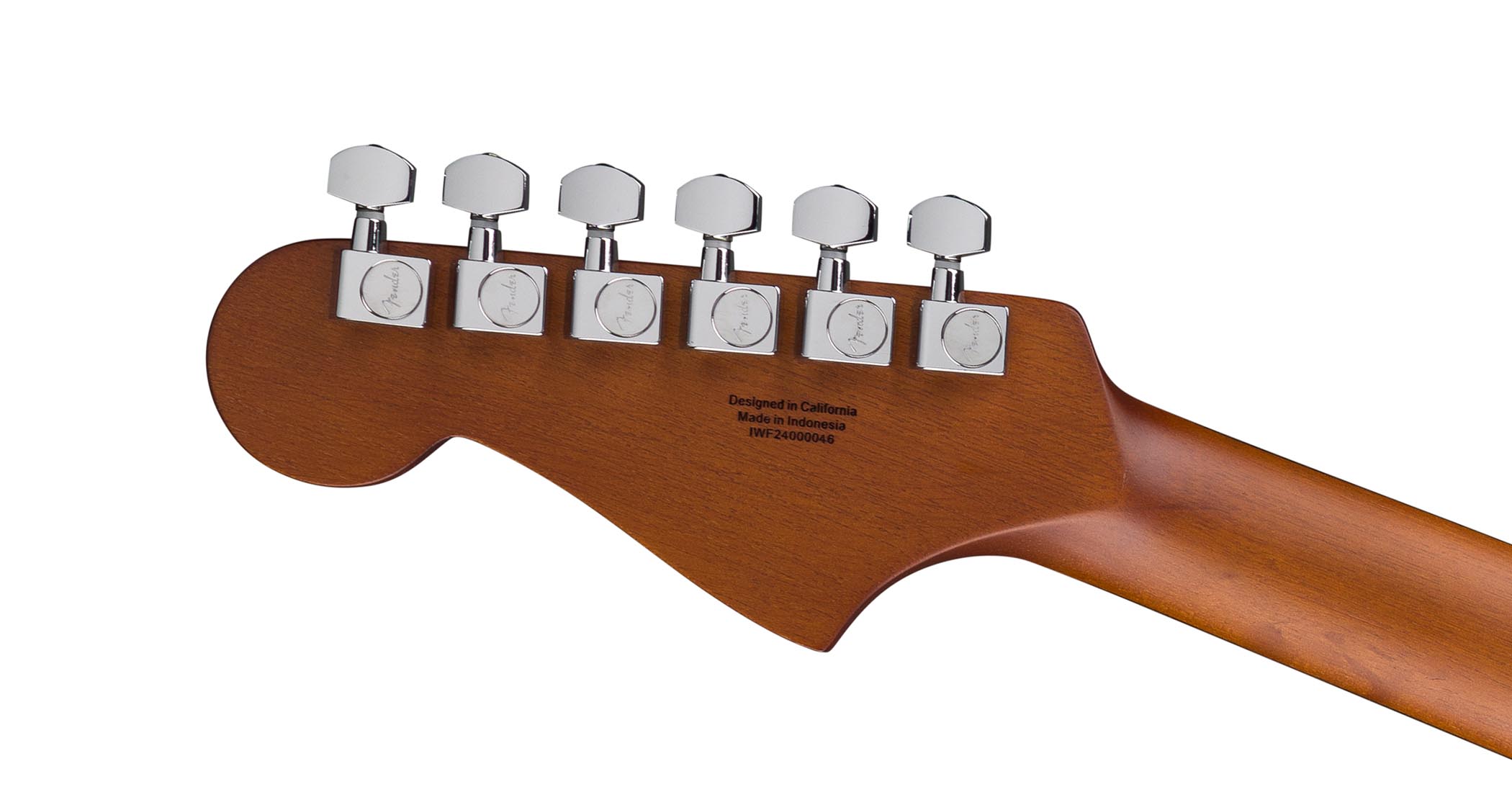
For hardware you get die-cast tuners with hex buttons, with the Strats equipped with a Standard 2-point tremolo with satin chrome steel block saddles, the Tele fitted with a string-through-body bridge with satin chrome saddles.
I’ve already watched some of the punditry post-launch where it’s like, ‘Oh, it’s a Squier with a Fender decal on it’
The big question for players is whether to spend an extra $200 on the Player II model, where you’ll find Alnico V pickups, high-ratio 18:1 ClassicGear tuners, and the choice of maple or rosewood fingerboards with rolled edges, or to go for top-of-the-range Squier, spending circa $429 on a vintage-inspired Classic Vibe model, with those nicotine-yellow stained gloss necks offering a Vintera-esque experience for less than half the price.
It’s a tough call. But maybe Norvell can help. Here he shares the thinking behind the Standard Series, who it’s for, why this is (probably) as cheap as the Acoustasonic is going to get, and why some online critics who are calling it Squier with a different decal on the headstock are getting it all wrong.
![Fender Standard Series: Launched at NAMM 2025, Fender's new affordable lineup comprises [L-R] the Jazz Bass, HSS Stratocaster, Stratocaster, Telecaster and Precision Bass](https://cdn.mos.cms.futurecdn.net/omnmbYXPH73KEG8JJzihMf.jpg)
What is the elevator pitch for the Standard Series?
“It’s not about a price point or filling a hole in a business term, it’s about, ‘I’m a kid guitar player or someone that wants a second guitar and I don’t wanna like buy super high-end but I want a rock-solid, reliable name brand guitar.’ And we didn’t have that.
“Our company statement is ‘Serving all players at all stages’ and we were kind of falling down on that in some respects. I’ve already watched some of the punditry post-launch where it’s like, ‘Oh, it’s a Squier with a Fender decal on it.’”
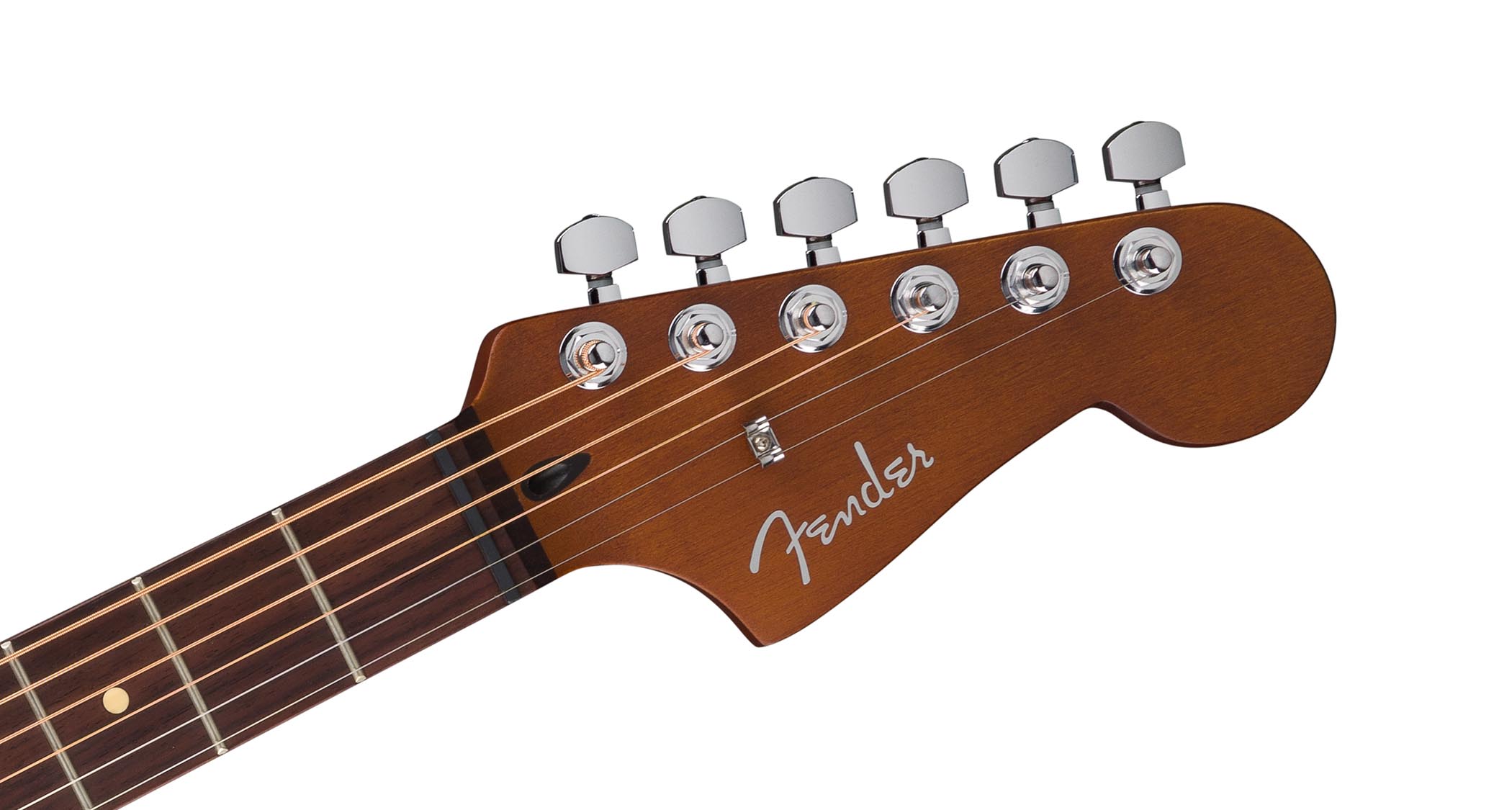
Okay, the Reply Guys online are saying things like this is just an Affinity Series Squier guitar with Fender on the headstock. How do you rebut that?
There are people that proudly play Squier over Fender. Squier, on its own, is one of the biggest electric guitar brands, so it would be crazy to get rid of that
“It was designed from the bottom up. Those guitars are value engineered, I would say; an Affinity Series [model], you are managing costs the whole time, and you’re just like, ‘How do I get it into the right spot while still being as good an instrument, playing as well as it can?’ Affinity Series guitars are awesome.
“This [Standard Series] guitar was designed with the price thing removed, basically, so it was just like, ‘What is the best guitar that we can make with this partner, in this facility, that would be worthy of the Fender name?’
“The guardrails that almost keep something Squier were off, but we were still conscious of what was above it and what was below it and what would make sense. It really was a clean slate, and it was like, ‘Can we do this?’ Geography is a fascinating thing; that it’s controversial, if this guitar had come out of one of our other facilities saying Fender no one would be having this conversation.”
Did you ever think about retiring the Squier brand and making Fender models from beginner to Custom Shop?
“I think everything is a discussion. We’re open enough as a company and we listen enough to think about it. But there’s so much equity in the Squier brand name. There are people that love Squier. There are people that proudly play Squier over Fender. Squier, on its own, is one of the biggest electric guitar brands, so it would be crazy to get rid of that.”
If this is someone’s first Fender guitar, we are trying to line it up with, ‘What do we think that person might play?
When you say the Standard Series is designed from the bottom up, does that mean that, say, these pickups are an all-new design? What can you tell us about them?
“Because Squier starts to bend more vintage at the top of its line, we wanted to go with something that’s a little more modern, more overwound – distortion-friendly, more aggressive. We had recently gone back to a more vintage Alnico thing on the Player Series so we thought this was one of the ways this could stick out.
“So if this is someone’s first Fender guitar, we are trying to line it up with, ‘What do we think that person might play? Or might want to hear?’ And a ceramic is a really even, diverse kind of pickup to start with. It’s a nice baseline and then you can trade up and out as you develop your tastes for what Alnico pickups bring – roundness, scoop and those different things that people start looking for.”
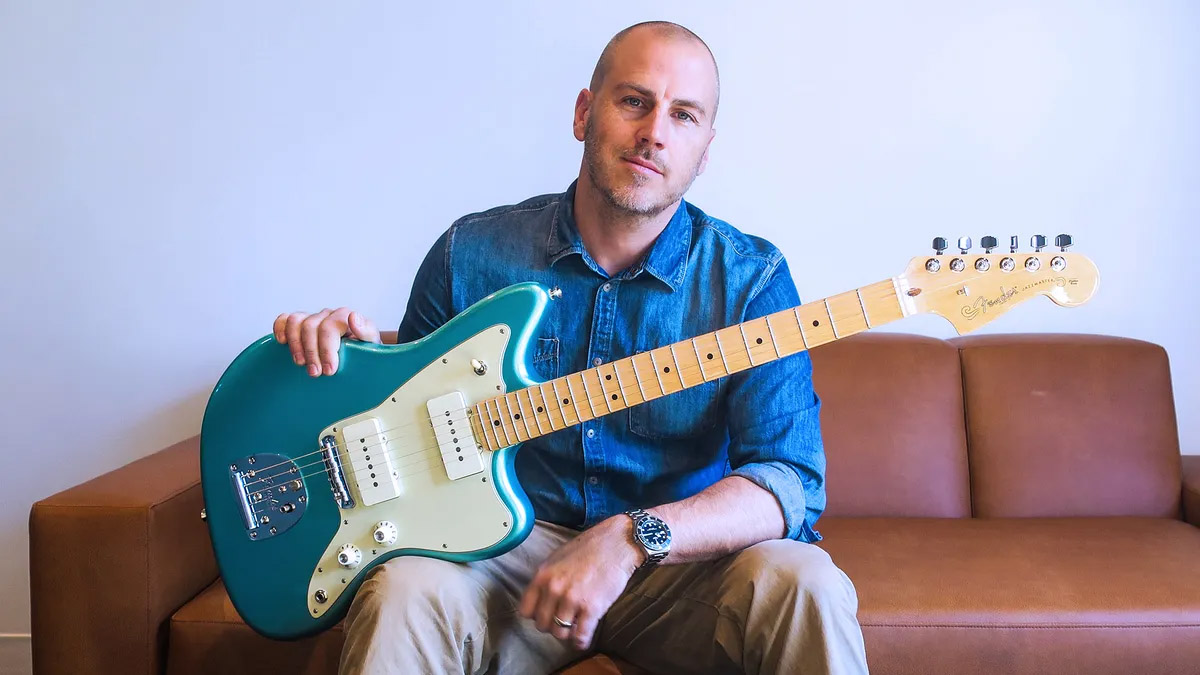
You mention trading up, the Standard Series models look like they would be good guitars for modding.
“Yeah, it very much can be a base platform for someone to do what Fenders were built to do. Fenders are wide open. Everyone wants to be unique and personalise things, and this is a perfect personalisation platform – for people who have a bunch of guitars and they want a guitar just to get into modding, this is a great step into that realm. There’s nothing too precious about it.”
Sure, and the players who might buy one can mod it as their own playing style evolves.
“We have always welcomed that and I think it’s going to be a great platform. The way people can play jazz, funk, country, punk, metal, anything on a Strat or a Tele, it’s amazing. James Burton to James Root on Teles.”
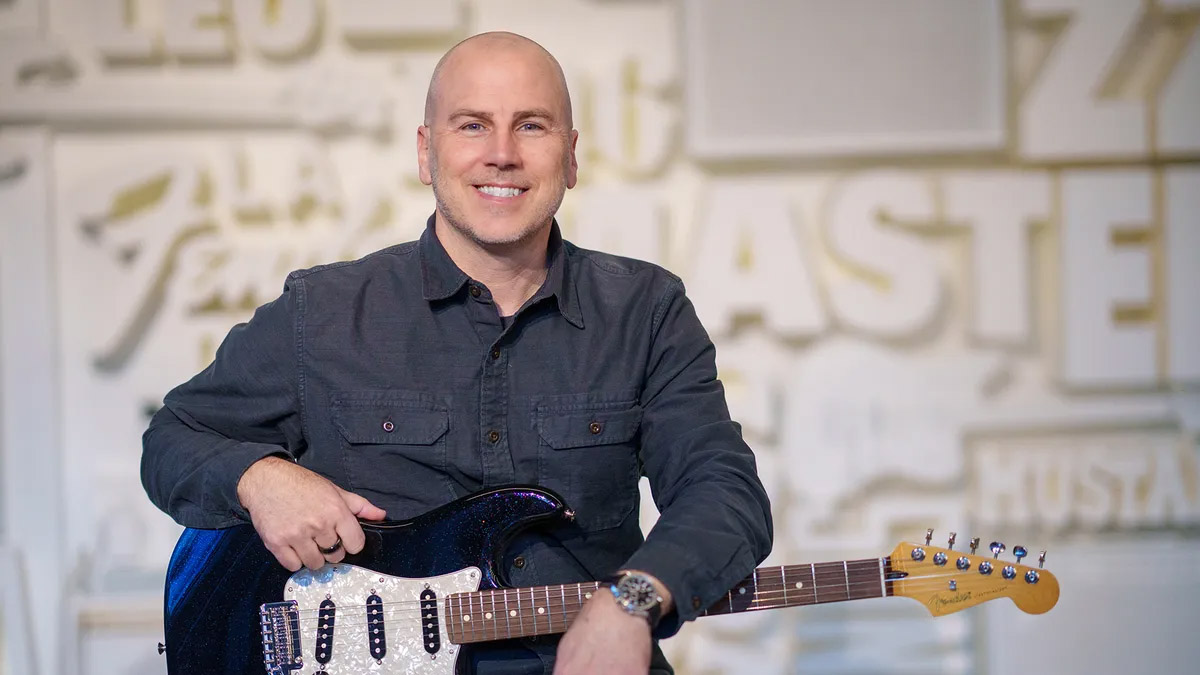
And Mike Rutherford on a modded beginner’s Bullet Strat.
“A hundred per cent. That’s brilliant. I think Clapton had an Ensenada-made Standard Strat before they became Players that his family bought him, and like they signed it and he plays that in between the Todd Krause Masterbuilt guitars.”
Sometimes it’s good for experienced players to pick up a well put-together beginner electric guitar and have some fun with it.
“The Squier Affinity, I mean, it’s 41mm [body thickness] instead of 45mm. It’s a little sleeker, thinner, lighter. There is a different feeling when you put that on. It can make you play differently. It’s amazing the quality that exists on beginner guitars these days.”
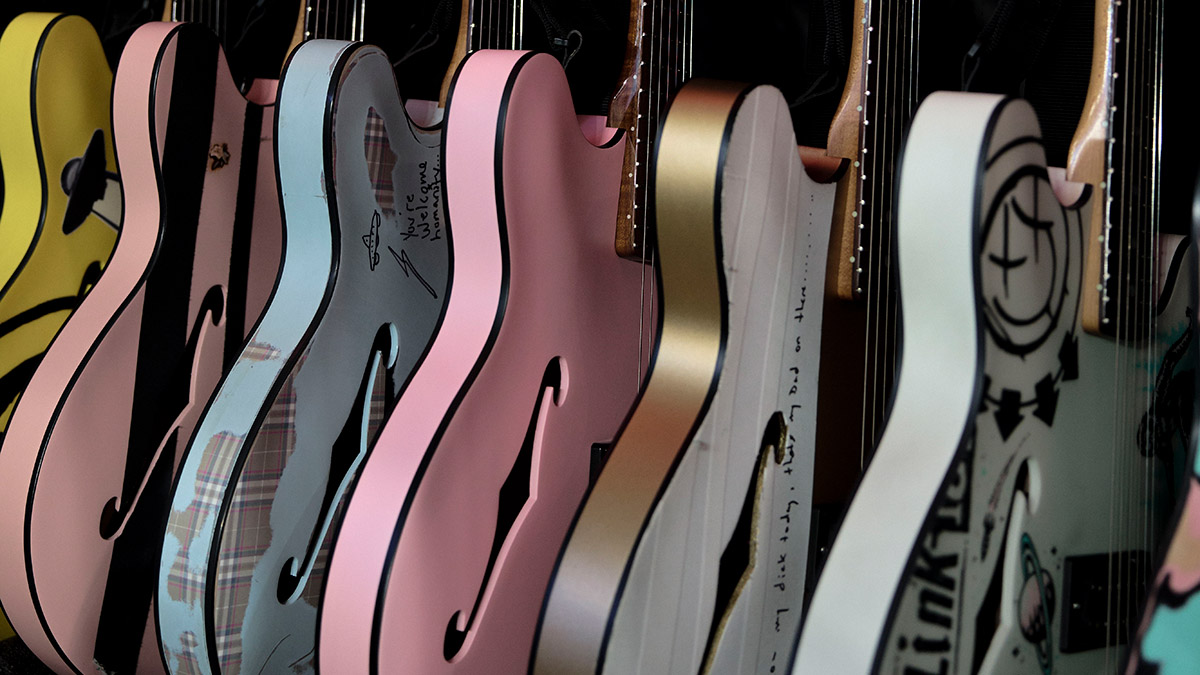
You are a big offset guy and there are no offsets in the Standard Series yet. Might we see them further down the line?
“Yeah, potentially. We just wanted to tailor the offering, keep it tight, don’t make it too big at the beginning. But I would never say never and it’s definitely something that we’ve discussed.”
For over 30 years, we have been sending our manufacturing experts over there and helping the factories that we chose to partner with. We would share in best practices
What does the relationship with Cor-Tek look like in practice? Do you send your luthiers over with the blueprints?
“Yeah, there would be R&D on our side and then that would go over to their side, and then their side would have to R&D it as well to fit their templates, machines, everybody’s standard metric and all the translation that has to occur between the facilities.
“There are several in-person meetings, several sit-downs, virtually back and forth every day, samples coming back and forth, and then we’re there for the proto runs, the pilot runs, all of that stuff – checking that stuff off as it comes off the line and having discussions, making adjustments. It’s very similar to if it was our own facility.”
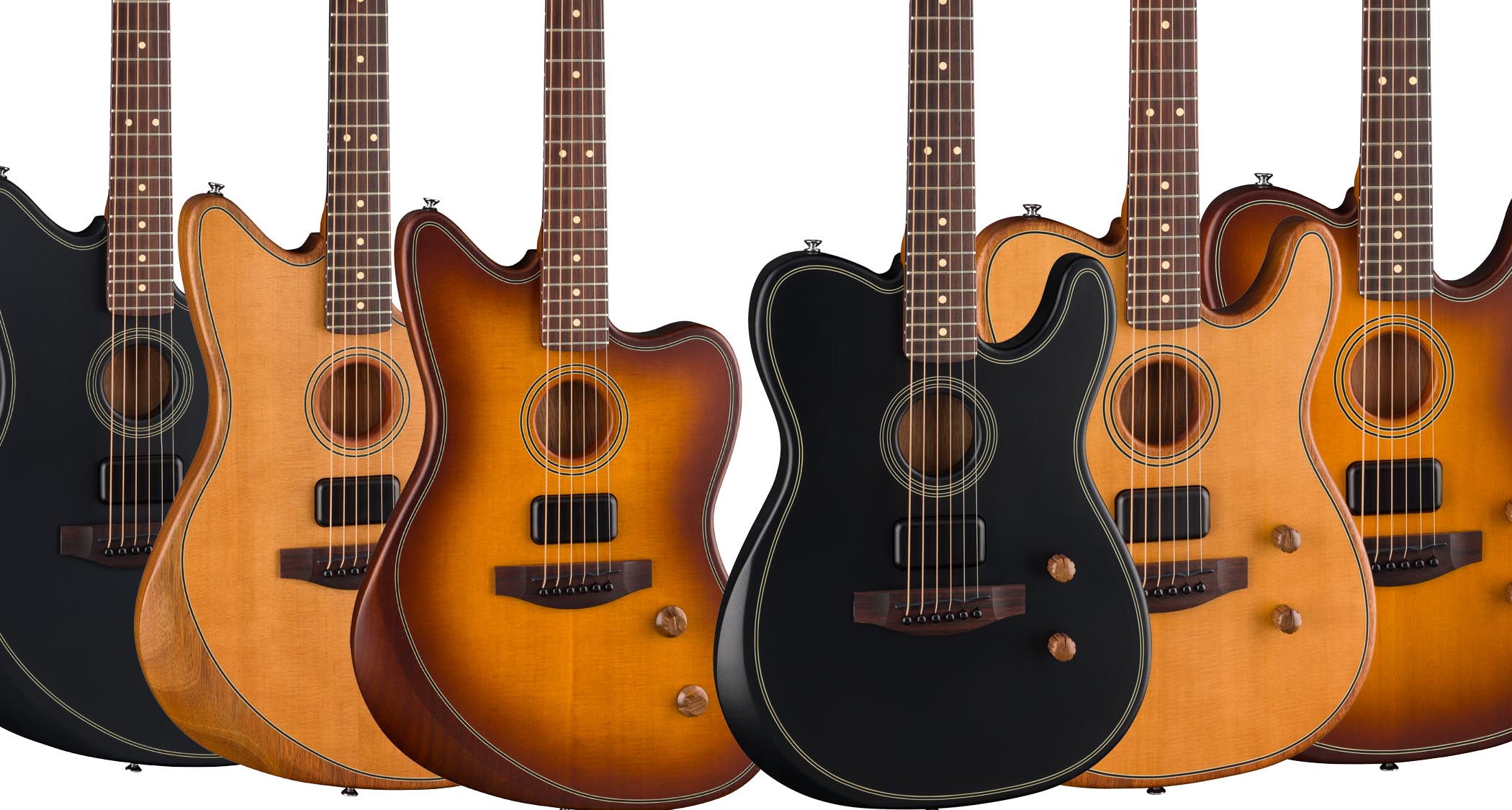
That Cor-Tek facility has such a good rep that it is a selling point.
“For over 30 years, we have been sending our manufacturing experts over there and helping the factories that we chose to partner with. We would share in best practices. We’ve had had ex-Master Builders like Chris Fleming and Mark Kendrick go out there. [Fender pickup guru] Tim Shaw used to go out there all the time, [chief engineer] Donnie Wade. We’ve had a cavalcade of people that have spent [time there]. This is the culmination of a 40-year partnership.”
You mentioned Indonesian-made signature models. Might we see Standard Series signature models?
“Anything is possible! The goal is for this to seep into the line, that there’s something there [for] all players at all stages, from the [Squier] Sonic Series all the way up to Custom Shop. We have upped quality so much in Ensenada. It’s not just that prices have increased there, what those guitars are today is not what those guitars were 15 years ago. This is the new reality for the product line.”

Was making a Standard Series Acoustasonic the toughest challenge?
“That was super complex. Basically, one of the things that makes that guitar more expensive is the electronics, that DSP technology. There’s a box in there that does great things. And so, how are we going to do this without that? Is there a way to do it with multiple parametric EQs? And other things that we could voice that could get it dialled-in in a way that sounds like it was worthy of the name and the sound quality that we associate with those guitars?
“Also, even the purfling was challenging for us… The factories that we work with over there don’t have the same technology. We had to figure out a lot. That was a ground-up [project]. Apart from the fact of, ‘This is how the body comes together…’, essentially all of the electronics, the pickups – everything – was a complete redesign and that took a lot of time and a lot of effort. But the team that worked on it, it was way better than they hoped for. It has probably come out a little bit later than we’d hoped but we wanted to do it right, not fast.”
This feels like the Acoustasonic finally going mainstream. Is this as cheap as they’ll come?
“I think this is probably as affordable as they will get, for the time being. Maybe as we get learnings about what’s hard, what’s possible, what barriers exist with this. There might be a way to go one more click down but I probably think this is about it.”
When do you know that a new series has been a success?
“There’s sales that occur just from when you launch something and that feels good, but I think staying power, and people, artists, using stuff, especially in iconic ways. This is an interesting business. The Jazzmaster was cool for a minute in the ‘60s, surf music and everything, and then it wasn’t cool again until the ‘90s.
“There are these peaks and valleys in guitardom. There are very famous guitars that weren’t made from 1962 to 1968 – majorly iconic guitars – and that has always been interesting because even when I think that we feel [success], we just need to be always reaching. Even when something isn’t a success, that might make it a cult success about 20 years from now.”
“Success is a relative term. We did a guitar in 2014, the Deluxe Strat Plus, that had the switchable mod cards – failure! But I think we learned something and it was a cool reach. No failure comes without learnings. It’s not a complete answer to your question but overall it’s not just about sales.
“If someone adopts it, and someone’s doing cool stuff with it, when you’re seeing it inspire people, like with the Acoustasonic, when Jack White gravitated right towards it and started doing some really cool stuff with it, asking for modifications. When you see someone really take to something that we’ve done and they’re making new music with it, that’s something that I would call success.”
- The Standard Series is available now. See Fender for more details.
Jonathan Horsley has been writing about guitars and guitar culture since 2005, playing them since 1990, and regularly contributes to MusicRadar, Total Guitar and Guitar World. He uses Jazz III nylon picks, 10s during the week, 9s at the weekend, and shamefully still struggles with rhythm figure one of Van Halen’s Panama.
You must confirm your public display name before commenting
Please logout and then login again, you will then be prompted to enter your display name.
“A fully playable electro-mechanical synth voice that tracks the pitch of your playing in real time”: Gamechanger Audio unveils the Motor Pedal – a real synth pedal with a “multi-modal gas pedal”
“I don’t think they’re New Order. They don’t sound anything like them”: Peter Hook takes aim at his estranged bandmates







